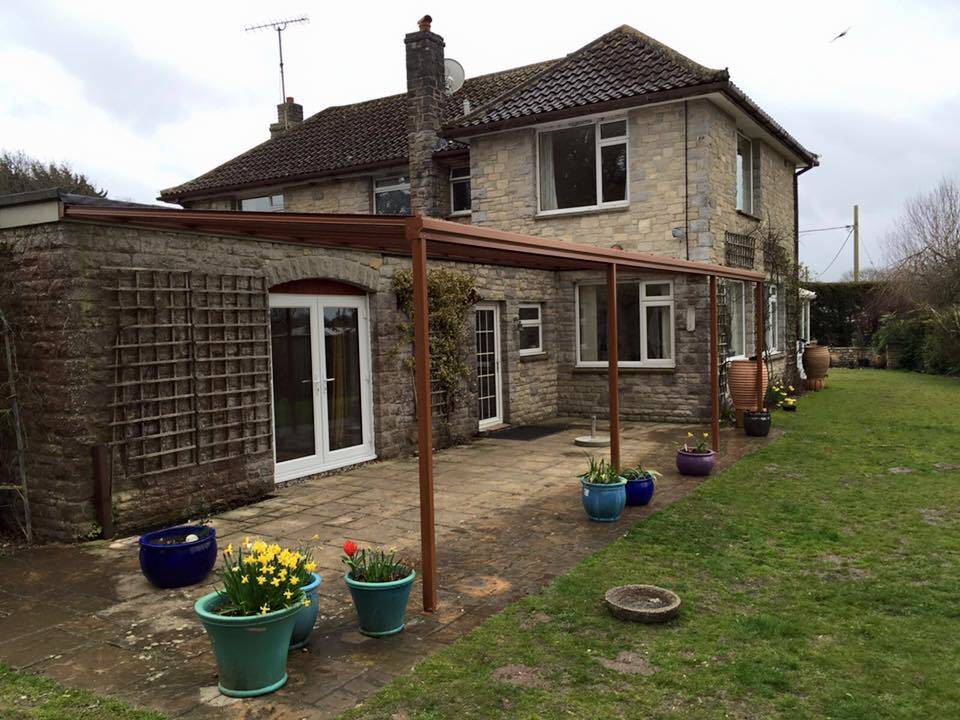Polycarbonate sheets are an excellent choice for constructing a variety of structures, such as carports, greenhouses, or garden verandas. They are lightweight, resilient, and easy to handle, all of these attributes make them a good choice for a competent DIY enthusiast to install. Ensuring fixing polycarbonate sheets to timber frames correctly will make sure that your polycarbonate can do the job it was intended to do. Sheets that are poorly fitted could leak or warp over time reducing the weather resistance of your structure. Make sure that you have researched how to correctly fit your polycarbonate roofing before you start. We have some top tips to help you get the best out of your next project.
Preparation Tips
As always, preparation is key to a successful finish. Make sure your work area is clear and you have all the tools and materials that you need before you start fixing polycarbonate sheets to timber. Spending time on the design of your structure before you start with construction will reduce the chance of making a costly mistake. Your timber frame needs to be constructed so that it can firmly hold your sheets. The main risk with this type of design is an uplift wind that can catch under the sheets and pull them off, but as long as the sheets are securely and correctly attached to the frame then your structure should be safe and sound.
Things Needed
Before you start fixing your polycarbonate sheets to your frame you will need to get ready. Certain pieces of equipment will make sure that your job is easier. You will need:
- Saw for cutting your sheets
- Safety equipment such as eye protection, gloves, and a face shield
- Power drill and screwdriver
- Polycarbonate sheets
- Fixings to include: anti-dust breather tape, button fixings, end stop bars
- Flashing tape and suitable sealant
If you are fixing your polycarbonate using glazing bars then you will also need:
- End caps and wall flashings
- A soft hammer
How to Fix Polycarbonate Roofing Sheets to Timber Frames
Method 1
There are two methods to fix polycarbonate sheets to a structure. We shall look at both methods. Here are the steps for the first method, whereby you fasten the sheet directly to the frame.
Step 1
Measure twice cut once! Carefully measure your polycarbonate roofing sheets to ensure that they are the correct fit for your timber frame. It can be a costly mistake if you cut your sheet too small or in the wrong place.
Step 2
Prepare the sheets, by pushing back the anti-scratch film on the polycarbonate and then fixing the anti-dust tape to the ends of the sheet. Once this is done, fix the end-stop bar to the polycarbonate and then seal with the sealant. This will keep your sheets in good condition for many years.
Step 3
Get your timber frame pre-drilled, at suitable intervals so that you are ready to attach your sheets. More careful measuring to ensure that the drilled holes in your polycarbonate sheet will line up with your timber holes. If you are unsure about the best distance for your fixings, seek advice. Your roofing sheets need to be secure enough to withstand strong winds but putting too many holes and screws in the polycarbonate could potentially weaken the structure.
Step 4
Fasten your screws onto your sheets, but be careful not to overtighten the screws as this could damage the sheets and reduce the weatherproofness of your roofing.
Step 5
If your structure joins another building, you may need to add flashing to the sheets and roofing to make it weatherproof. An independent polycarbonate structure won’t need flashings.
How to Fix Polycarbonate Roofing Sheets to Timber Frames
Method 2
This method requires the use of glazing bars rather than fixing the polycarbonate directly to the frame. Both methods are good, but glazing bars are often used on larger polycarbonate structures or in windy areas.
Step 1
As in the first method, the key lies in measuring your sheets correctly. When measuring a sheet it is important to account for the glazing bars. Your fit should leave a few millimetres so that your polycarbonate sheet has room for thermal expansion.
Step 2
Prepare the rafters ready for the glazing bars. Different types of glazing bars attach in different ways, so it is important to understand which type you have and adjust accordingly.
Step 3
Cut your glazing bars to size, again measuring is the key here. Remember that cutting aluminium will need a specific blade to ensure a good clean cut.
Step 4
Installation time! Fix your glazing bars and polycarbonate securely in place, and make sure that you follow the precise instructions for your type of glazing bar. Endcaps can be fitted once all the glazing bars are attached, and certain glazing bars may require additional fixings.
Step 5
Check whether flashing is needed for your polycarbonate sheet structure. If you have built your installation against another building, flashing will help to weatherproof the join, whereas a freestanding installation won’t require flashing.
Final Thoughts
Planning, designing, and installing your own structure, whether it be a carport, veranda, or greenhouse, can be fun and rewarding. At Glazing Systems we have a range of different polycarbonate sheets in a variety of thicknesses to suit all manner of projects. Make sure you choose the best type of polycarbonate for your project, in general, the bigger or more complex the build, the thicker the polycarbonate sheets you will require. Whether you want a covered area to protect your car, or an economical way to create extra room in your house, a polycarbonate structure could be just the answer. Taking time over your project will ensure that you have a first-class finish and a great addition to your home and garden. Whatever you want to create, we can help you, with our fantastic range of polycarbonate sheets and accessories here at Glazing Systems.
Shop Our Full Range of Polycarbonate Sheets

